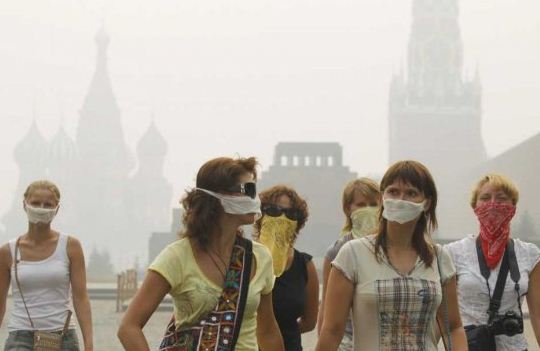
The carbon monoxide (CO) levels in parts of Russia caused by the numerous wildfires have been described as being five to seven times the maximum safe level, but the articles don’t specify the actual CO readings in parts per million. The U.S. National Ambient Air Quality Standards for CO levels in outdoor air are 9 ppm (40,000 micrograms per meter cubed) for 8 hours, and 35 ppm for 1 hour. CO cannot be filtered out by using cheap dust masks, bandannas, or “Hot Shield” masks unfortunately marketed to wildland firefighters.
The effects of CO are listed below.
The smoke and CO is so severe that some are evacuating, including employees of the Canadian embassy.
On Sunday authorities in Moscow opened 120 “anti-smog” centers, air-conditioned rooms where residents can take a break from the record-setting heat and the smoke.
In the United States we have done the same thing at fire camps that were socked in with smoke trapped by inversions. In 1988 (and also other years) when the Logistics sections on fires in northern California set up tents with air filtration that were supposed to provide off-duty firefighters some relief from the smoke. (Was oxygen provided too? Can anyone provide more details about this?)
National Weather Service meteorologists say smoke from Russia has drifted all the way into Canada.

